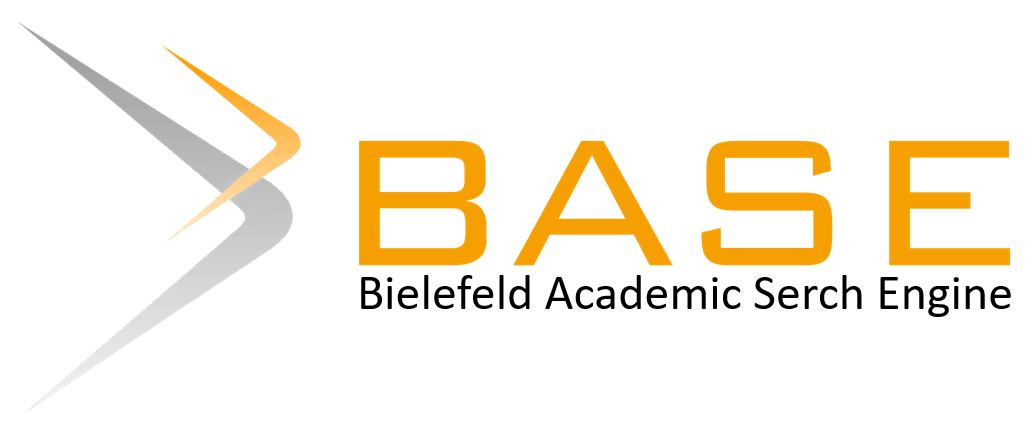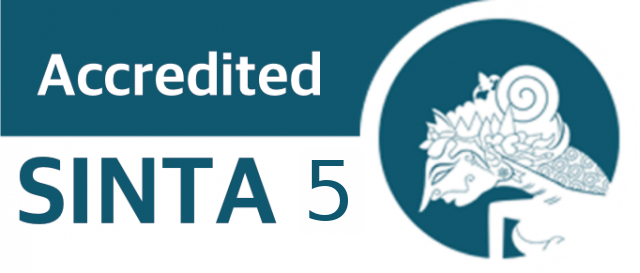Potential Use of Clove Oil Diluted in VCO On Contaminated Wound Healing
DOI:
https://doi.org/10.30595/hmj.v6i1.17356Keywords:
clove oil, wound healing, VCO, virgin coconut oilAbstract
Â
Essential oils, including clove oil, has been used broadly through human civilization due to its multiple benefits, including its utilization as natural antiseptics. In spite of its benefits, clove oil can cause irritation if applied neat to the skin, thus a carrier oil is needed for topical application of clove oil. Clove oil together with virgin coconut oil as a carrier, has potential synergic benefit if applied on contaminated wounds due to its enhanced antiseptic and anti-inflammatory properties. The aim of this study is to investigate the effect of topical application of clove (Syzygium aromaticum) oil diluted in Virgin Coconut Oil on contaminated wound. This study was a quasi-experimental research with post-test only control group design. Clove oil that had been diluted in VCO was applied on contaminated excisional wound in white male rat wistar strain once daily. The wound was inflicted using unsterilized scalpel. The wound was then left exposed to the environment without any dressing and the healing process was then evaluated by measuring the wound area percentage once every four days for sixteen days. Friedman analysis used in this study showed a significant result (p<0,001) and Concentration of 5% clove oil diluted in VCO was found to be the most effective concentration based on the measurement of wound area percentage on the last day of measurement. This study concludes that the topical application of clove oil diluted in VCO showed a significant difference in wound healing process.Â
References
1. Hesham H. A. Rassem, Abdurahman h. nour rosli m. yunus. Techniques For Extraction of Essential Oils From Plants : A Review. Aust J basic Appl Sci. 2016;10(November):117-127.
2. W. Dhifi, S. Bellili, S. Jazi, N B and WM. Essential Oils ’ Chemical Characterization and Investigation of Some Biological Activities : Medicines. 2016;3(4):25. doi:10.3390/medicines3040025
3. Sorg H, Tilkorn DJ, Hager S, Hauser J, Mirastschijski U. Skin Wound Healing: An Update on the Current Knowledge and Concepts. Eur Surg Res. 2017;58(1-2):81-94. doi:10.1159/000454919
4. Kesici S, Kesici U, Ulusoy H, Erturkuner P, Turkmen A, Arda O. Effects of local anesthetics on wound healing. Brazilian J Anesthesiol (English Ed. 2018;68(4):375-382. doi:10.1016/j.bjane.2018.01.020
5. Mimica-dukić N, Orčić D, Lesjak M, Šibul F. Essential Oils as Powerful Antioxidants : Misconception or Scientific Fact ? Published online 2016.
6. Nurdjannah N. Diversifikasi Penggunaan Cengkeh. Perspekt Rev Penelit Tanam Ind. 2006;(12).
7. Bhowmik D, Kumar KPS, Yadav A, Srivastava S, Paswan S, Dutta AS. Recent Trends in Indian Traditional Herbs Syzygium Aromaticum and its Health Benefits. J Pharmacogn Phytochem. 2012;1(1):6-17.
8. Uddin MA, Shahinuzzaman M RM and YZ. Study of chemical composition and medicinal properties of volatile oil from clove buds (Eugenia caryophyllus). Int J Pharm Sci Res 2017. 2017;6(2):5-9. doi:10.13040/IJPSR.0975-8232.8(2).895-99
9. Orchard A, Vuuren S Van. Commercial Essential Oils as Potential Antimicrobials to Treat Skin Diseases. 2017;2017. doi:10.1155/2017/4517971
10. van Koppen CJ, Hartmann RW. Advances in the treatment of chronic wounds: a patent review. Expert Opin Ther Pat. 2015;25(8):931-937. doi:10.1517/13543776.2015.1045879
11. Alam P, Ansari MJ, Anwer MK, Raish M, Kamal YKT, Shakeel F. Wound healing effects of nanoemulsion containing clove essential oil. Artif Cells, Nanomedicine, Biotechnol. 2017;45(3):591-597. doi:10.3109/21691401.2016.1163716
12. Orchard A, Kamatou G, Viljoen AM, Patel N, Mawela P, van Vuuren SF. The Influence of Carrier Oils on the Antimicrobial Activity and Cytotoxicity of Essential Oils. Evid Based Complement Alternat Med. 2019;2019:6981305. doi:10.1155/2019/6981305
13. Varma SR, Sivaprakasam TO, Arumugam I, et al. In vitro anti-inflammatory and skin protective properties of Virgin coconut oil. J Tradit Complement Med. 2018;9(1):5-14. Published 2018 Jan 17. doi:10.1016/j.jtcme.2017.06.012
14. Viljoen JM, Cowley A, Du Preez J, Gerber M, Du Plessis J. Penetration enhancing effects of selected natural oils utilized in topical dosage forms. Drug Dev Ind Pharm. 2015;41(12):2045-2054. doi:10.3109/03639045.2015.1047847
15. Evangelista MTP, Abad-Casintahan F, Lopez-Villafuerte L. The effect of topical virgin coconut oil on SCORAD index, transepidermal water loss, and skin capacitance in mild to moderate pediatric atopic dermatitis: a randomized, double-blind, clinical trial. Int J Dermatol. 2014;53(1):100-108. doi:10.1111/ijd.12339
16. Varma SR, Sivaprakasam TO, Arumugam I, et al. In vitro anti-inflammatory and skin protective properties of Virgin coconut oil. J Tradit Complement Med. 2018;9(1):5-14. doi:10.1016/j.jtcme.2017.06.012
17. A. Trattner, M. David and AL. Occupational contact dermatitis due to essential oils. In: Contact Dermatitis, Vol. 58, No. 5. ; 2008:282–284.
18. Singh S, Young A, McNaught CE. The physiology of wound healing. Surg (United Kingdom). 2017;35(9):473-477. doi:10.1016/j.mpsur.2017.06.004
19. Pérez-Rosés R, Risco E, Vila R, Peñalver P, Cañigueral S. Biological and Nonbiological Antioxidant Activity of Some Essential Oils. J Agric Food Chem. 2016;64(23):4716-4724. doi:10.1021/acs.jafc.6b00986
20. Gonzalez AC de O, Costa TF, Andrade Z de A, Medrado ARAP. Wound healing - A literature review. An Bras Dermatol. 2016;91(5):614-620. doi:10.1590/abd1806-4841.20164741
21. Caley MP, Martins VLC, O’Toole EA. Metalloproteinases and Wound Healing. Adv wound care. 2015;4(4):225-234. doi:10.1089/wound.2014.0581
22. auf dem Keller U, Sabino F. Matrix metalloproteinases in impaired wound healing. Met Med. Published online May 26, 2015:1. doi:10.2147/MNM.S68420
23. Nam H, Kim M-M. Eugenol with antioxidant activity inhibits MMP-9 related to metastasis in human fibrosarcoma cells. Food Chem Toxicol. 2013;55:106-112. doi:10.1016/j.fct.2012.12.050
24. Tsai T-H, Huang W-C, Lien T-J, et al. Clove extract and eugenol suppress inflammatory responses elicited by Propionibacterium acnes in vitro and in vivo. Food Agric Immunol. 2017;28(5):916-931. doi:10.1080/09540105.2017.1320357
Downloads
Published
Issue
Section
License
For submission of manuscripts to the Herb-Medicine Journal, the authors must certify that:
I have been authorized by my co-author to submit the manuscript to the Herb-Medicine Journal
I hereby declare, on behalf of myself and my co-authors, that:
The submitted manuscript is original work and has not been published in another peer-reviewed journal or is being considered for publication by another journal. Also, the manuscript does not infringe any existing copyright or other third party rights.
The manuscript does not contain material that may violate the law, slander, or SARA, in any way, violates the terms and conditions contained in the agreement
I/we have taken care that the scientific knowledge and all other statements contained in the manuscript are in accordance with authentic facts and formulas and will not, if followed appropriately, harm the user
No liability shall be assumed by Herb-Medicine Journal, its staff or members of the editorial board for any injury and/or damage to persons or property as a matter of product liability, negligence or otherwise, or from the use or operation of any method, product instructions, advertising , or ideas contained in publications by the Herb-Medicine Journal
Authors who publish in the Herb-Medicine Journal certify that all authors have read and agree to the contents of the Cover Letter or the Terms and Conditions. Plagiarism is strictly prohibited, and by submitting a manuscript for publication, the author agrees that the publisher has the legal right to take appropriate action against the author, if plagiarism or false information is found. Once submitted to the Herb-Medicine Journal, authors will not withdraw their manuscript at any stage prior to publication.
The author owns the copyright and grants the journal rights for first publication with the work simultaneously licensed under a Creative Commons Attribution License which allows others to share the work with acknowledgment of the work's authorship and initial publication in this journal.
Authors may enter into separate additional contractual agreements for the non-exclusive distribution of the published journal version of the work (for example, posting it to an institutional repository or publishing it in a book), with acknowledgment of its initial publication in this journal.
Authors are permitted and encouraged to post their work online (for example, in institutional repositories or on their websites) prior to and during the submission process, as this can lead to productive exchanges, as well as earlier and larger citation of published work (See The Effects of Open Access).
Untuk pengiriman naskah ke Herb-Medicine Journal, penulis harus menyatakan bahwa:
- Saya telah diberikan otorisasi oleh rekan penulis saya untuk memasukkan naskah ke Herb-Medicine Journal
- Saya dengan ini menyatakan, atas nama saya dan rekan penulis saya, bahwa:
- Naskah yang dikirimkan adalah karya asli dan belum pernah diterbitkan dalam jurnal peer-review lain atau sedang dipertimbangkan untuk diterbitkan oleh jurnal lain. Serta, naskah tidak melanggar hak cipta yang ada atau hak pihak ketiga lainnya.
- Naskah tidak mengandung materi yang mungkin melanggar hukum, memfitnah, atau SARA, dengan cara apa pun, melanggar syarat dan ketentuan yang tercantum dalam perjanjian
- Saya / kami telah berhati-hati bahwa pengetahuan ilmiah dan semua pernyataan lain yang terkandung dalam naskah sesuai dengan fakta dan formula otentik dan tidak akan, jika diikuti dengan tepat, merugikan pengguna
- Tidak ada tanggung jawab yang ditanggung oleh Herb-Medicine Journal, stafnya atau anggota dewan editorial untuk setiap cedera dan/atau kerusakan pada orang atau properti sebagai masalah pertanggungjawaban produk, kelalaian atau sebaliknya, atau dari penggunaan atau pengoperasian metode, produk apa pun instruksi, iklan, atau ide yang terkandung dalam publikasi oleh Herb-Medicine Journal
Penulis yang menerbitkan dalam Herb-Medicine Journal menyatakan bahwa semua penulis telah membaca dan menyetujui isi Surat Pengantar atau Syarat dan Ketentuan. Plagiarisme dilarang keras, dan dengan menyerahkan naskah untuk publikasi, penulis setuju bahwa penerbit memiliki hak hukum untuk mengambil tindakan yang pantas terhadap penulis, jika ditemukan plagiarisme atau informasi palsu. Setelah diserahkan ke Herb-Medicine Journal, penulis tidak akan menarik naskah mereka pada tahap apa pun sebelum dipublikasikan.
Penulis memiliki hak cipta dan memberikan hak jurnal untuk publikasi pertama dengan karya yang secara simultan dilisensikan di bawah Lisensi Creative Commons Attribution yang memungkinkan orang lain untuk berbagi karya dengan pengakuan kepengarangan karya dan publikasi awal dalam jurnal ini.
Penulis dapat membuat perjanjian kontrak tambahan yang terpisah untuk distribusi non-eksklusif versi jurnal yang diterbitkan dari karya tersebut (misalnya, mempostingnya ke repositori institusional atau menerbitkannya dalam sebuah buku), dengan pengakuan atas publikasi awalnya di jurnal ini.
Penulis diizinkan dan didorong untuk memposting pekerjaan mereka secara online (misalnya, dalam repositori institusional atau di situs web mereka) sebelum dan selama proses pengajuan, karena dapat menyebabkan pertukaran yang produktif, serta kutipan yang lebih awal dan lebih besar dari karya yang diterbitkan (Lihat The Effect of Open Access).













